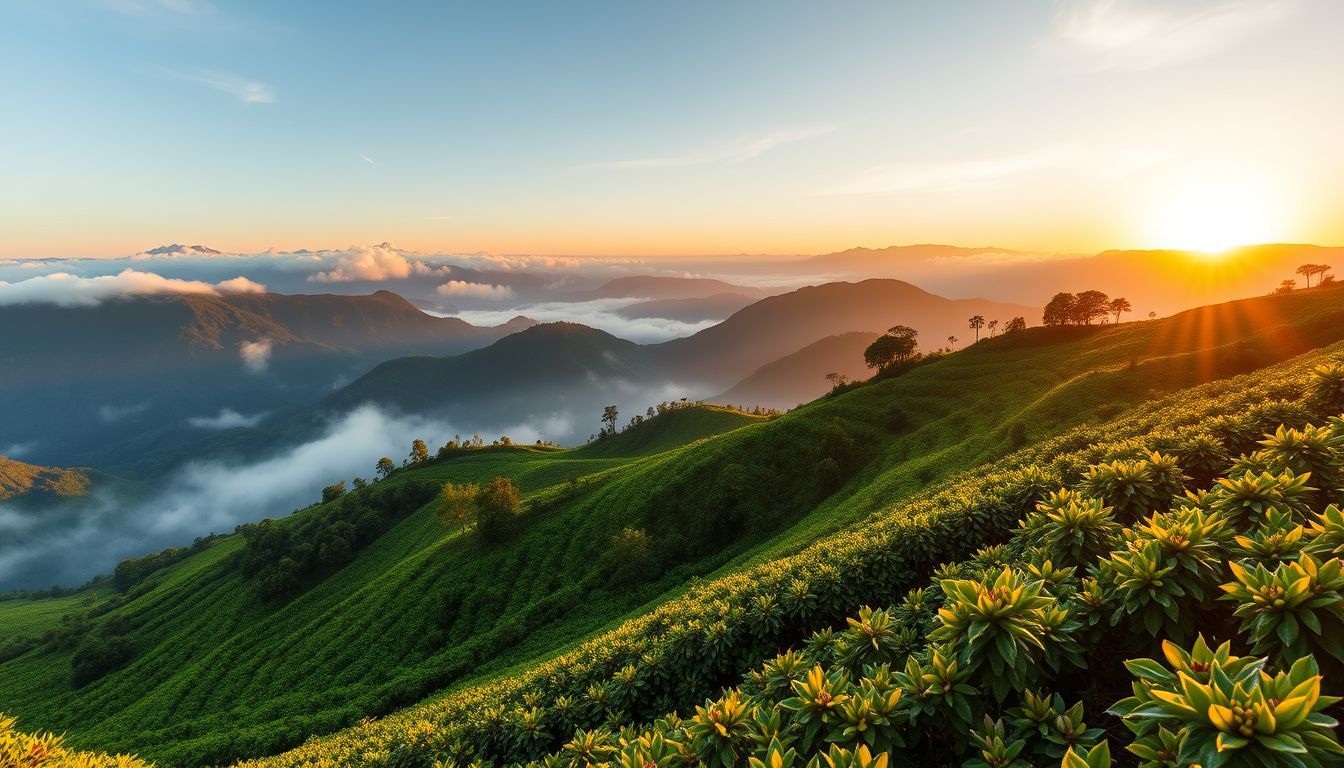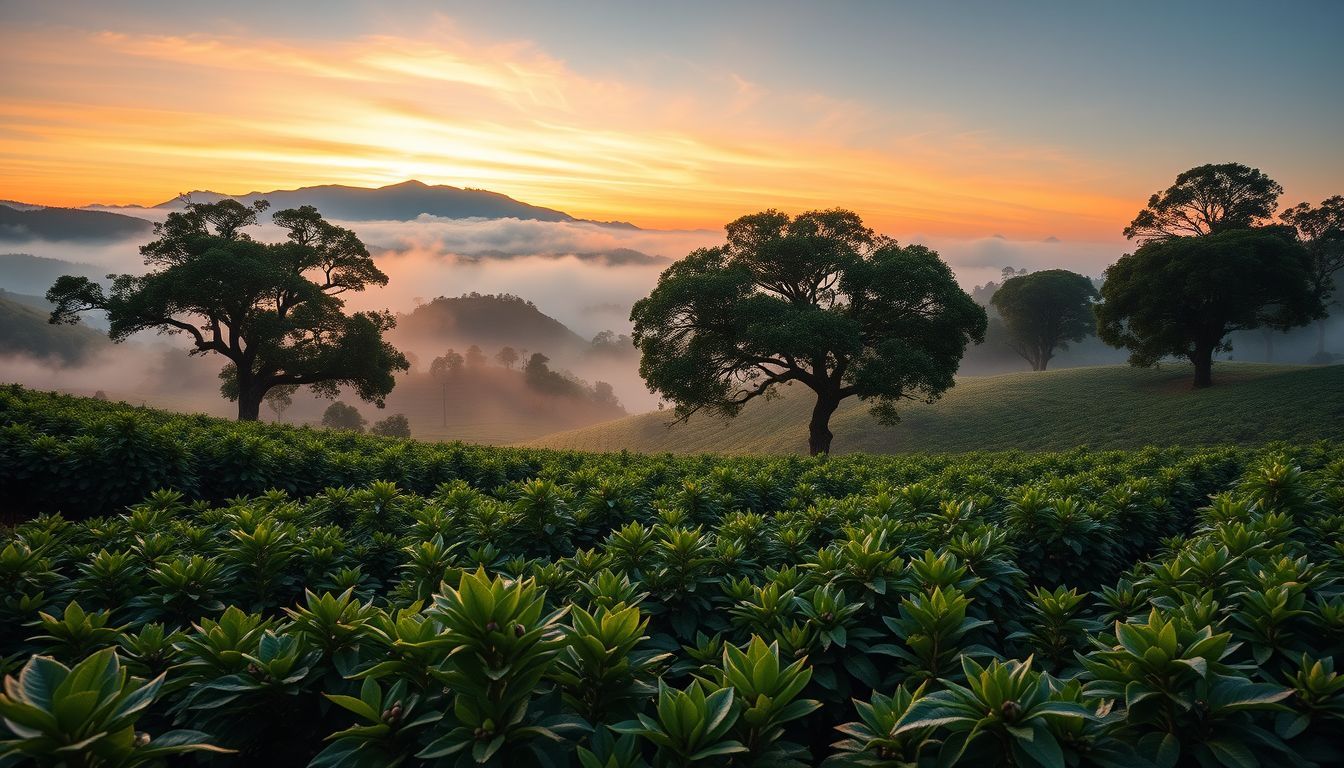The Role of Coffee Altitude: How Growing Heights Influence Bean Aroma and Taste Profiles
Explore how the altitude at which coffee is grown shapes its aroma and flavor, from the bright acidity of high-altitude beans to the mellow notes of lower elevations.

The Role of Coffee Altitude: How Growing Heights Influence Bean Aroma and Taste Profiles
In the verdant tapestry of coffee cultivation, altitude emerges as a silent composer, orchestrating the symphony of flavors and aromas that dance upon our palates. As we traverse the elevations where coffee plants root themselves, we uncover a profound narrative of how the heights at which these beans grow sculpt their very essence.
The Ascent: High-Altitude Coffee and Its Vibrant Complexity
The Slow Maturation Process
Perched above 1,200 meters (approximately 4,000 feet), coffee plants bask in cooler temperatures and thinner air. This environment slows the ripening of coffee cherries, allowing beans to develop a denser structure and a richer array of sugars and acids. Such conditions foster a complexity that manifests in the cup as bright acidity and intricate flavor notes. (beanground.com)
Flavor Profiles at Elevated Heights
High-altitude coffees are celebrated for their vibrant acidity and multifaceted flavors. One study noted that as growing elevation increases, pyrazines and alcohols decrease, while aldehydes increase. This shift reduces nutty and roasted flavors, enhancing sweet sugar and caramel aromas. (roastmagazine.com)
Exemplary High-Altitude Regions
Regions like Ethiopia's Yirgacheffe and Colombia's Nariño, where elevations soar, produce beans that embody these characteristics. The coffees from these areas often present floral and citrus notes, a testament to their lofty origins. (espressomachineaddict.com)
The Descent: Low-Altitude Coffee and Its Gentle Embrace
Rapid Growth and Flavor Development
Below 900 meters (approximately 3,000 feet), the warmer climate accelerates the maturation of coffee cherries. This swift development leads to beans with a softer acidity and a fuller body, often resulting in flavor profiles that are more straightforward and comforting. (dabov.us)
Flavor Profiles at Lower Elevations
Coffees cultivated at these elevations tend to exhibit earthy, nutty, and chocolatey notes. The reduced acidity allows for a smoother, more mellow cup, appealing to those who favor gentler flavors. (roastroute.com)
Notable Low-Altitude Regions
Brazil's expansive coffee plantations, many situated at lower elevations, yield beans that exemplify these flavor profiles. The coffees from these regions are often characterized by their mild and balanced nature. (karmacoffeecafe.com)
The Middle Ground: Mid-Altitude Coffee and Harmonious Balance
A Blend of Characteristics
Between 900 and 1,200 meters (approximately 3,000 to 4,000 feet), coffee plants experience a fusion of conditions from both high and low altitudes. This middle ground fosters beans that balance acidity and body, offering flavor profiles that are both nuanced and approachable. (winwin.coffee)
Flavor Profiles in Mid-Altitude Regions
Coffees from these elevations often present a harmonious blend of fruity and nutty notes, with a moderate acidity that appeals to a broad spectrum of palates. (winwin.coffee)
Representative Mid-Altitude Regions
Regions such as Guatemala's Antigua and parts of Costa Rica's Tarrazú, where elevations fall within this range, produce coffees that showcase this delightful equilibrium. (espressomachineaddict.com)
Beyond Elevation: The Interplay of Factors
While altitude plays a pivotal role, it is but one thread in the intricate fabric of coffee flavor development. Factors such as soil composition, climate, and cultivation practices intertwine with elevation to shape the final cup. (roastmagazine.com)
Conclusion: Elevation as a Guide to Flavor Exploration
As we savor each cup of coffee, understanding the altitude at which the beans were grown offers us a glimpse into the journey from soil to sip. Whether it's the bright, complex notes of a high-altitude Ethiopian brew or the smooth, comforting embrace of a low-altitude Brazilian cup, altitude serves as a compass guiding us through the diverse landscapes of coffee flavors. Embracing this knowledge enriches our appreciation, allowing us to connect more deeply with the stories each bean has to tell.

Ben Carter
I spent the first part of my life learning the language of the wild—the rustle of leaves, the silence of snow, the resilience of a lone tree. In my writing, I try to translate that language, exploring how the landscapes around us shape the landscapes within us. My stories are quiet, but I hope they speak to a deeper part of you.


